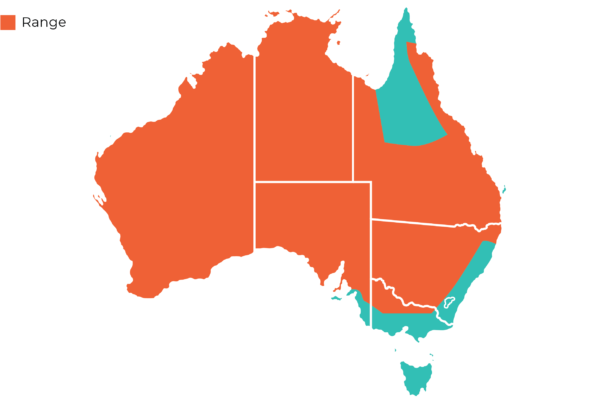Description
The Sand Monitor is a large Australian monitor lizard and is also known as the Gould's monitor, Sand goanna or Racehorse goanna. They are a yellowish-brown, reddish-brown to blackish-brown in colour with yellow speckled dots and a pale-edged blackish stripe extending from the eye onto the neck. The tail has narrow yellow bands, with the last quarter remaining uniform cream or yellow. The tongue is long and forked like a snake.
Distribution
The Sand Monitor has the widest distribution of any monitor in Australia. They are found throughout most parts of Australia except Tasmania, the extreme south-east and the forested areas of the east coast subjected to very high rainfall and the majority of central Queensland where a variety of other monitor species have occupied their niche.

Lifespan
The lifespan of many of our reptiles has not been studied in great detail, many are considered to live an average of 20 - 30 years.
Size
Up to 1.6m in length and weigh up to 6kgs. It is the 2nd largest goanna or monitor species in Australia.
Diet
Sand Monitors are scavengers eating insects, small mammals, lizards, nestling birds and frogs.
Habitat
The Sand Monitor is found in dry woodland, grassland and shrubland.
Breeding
Mating takes place in the wet season. The female Sand Monitor lays from 8 - 10 eggs. The eggs are usually laid in termite mounds, the female will dig a hole and lay the eggs and then leave the termites to reseal the eggs inside the nest to keep them warm.